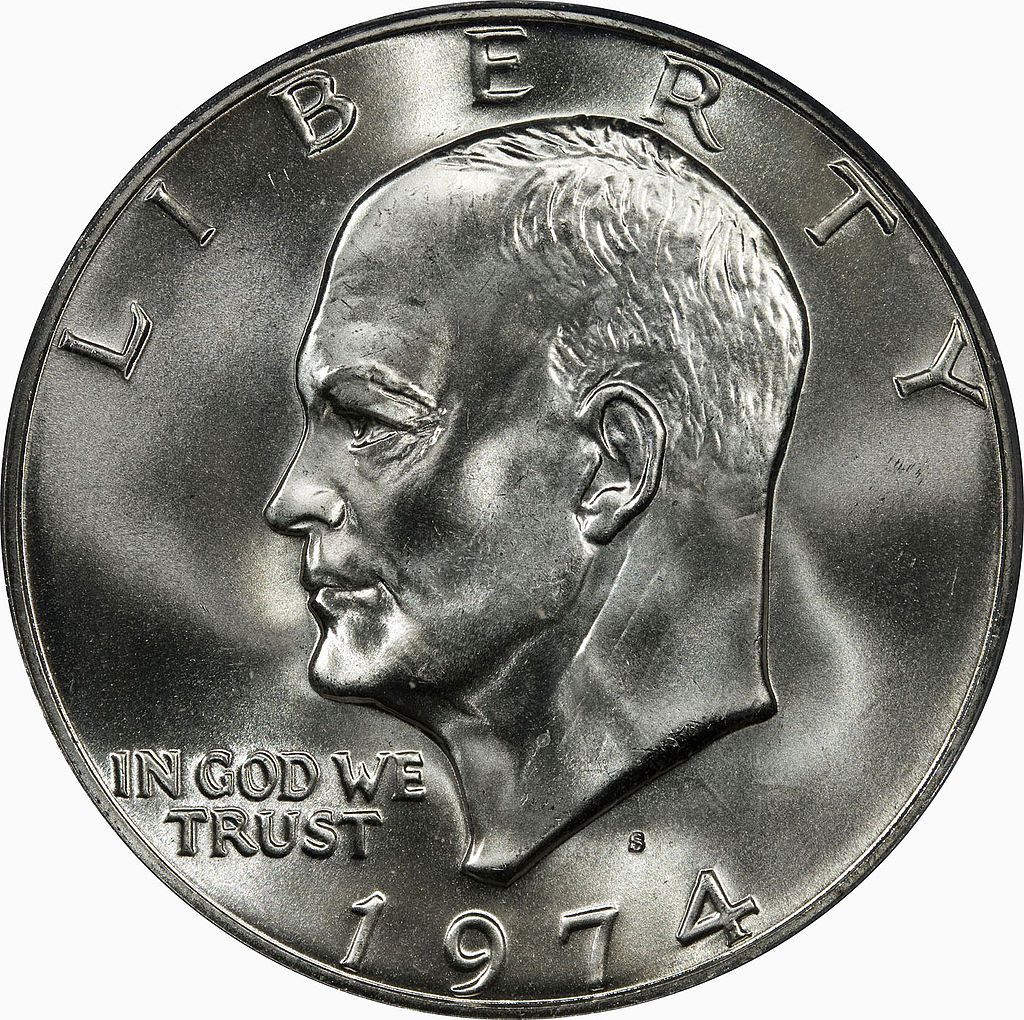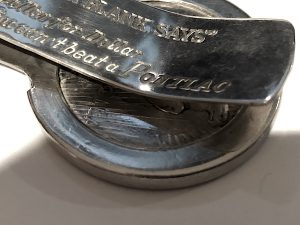Apr 18, 2021 | celebration, coins, dollar
WELCOME TO NATIONAL COIN WEEK!
 Starting today, April 18, 2021, through April 24, National Coin Week celebrates “Money, Big and Bold,” the history of the large dollar coin. The influence for this year’s NCW theme is the 100th anniversary of the revival of the Morgan Dollar and the first issue of the Peace Dollar. It is also the 50th anniversary of the first Eisenhower Dollar, the last of the large dollar coins.
Starting today, April 18, 2021, through April 24, National Coin Week celebrates “Money, Big and Bold,” the history of the large dollar coin. The influence for this year’s NCW theme is the 100th anniversary of the revival of the Morgan Dollar and the first issue of the Peace Dollar. It is also the 50th anniversary of the first Eisenhower Dollar, the last of the large dollar coins.
The dollar coin has had a fascinating history in the United States. Before paper money and during the wild days referred to as Broken or Obsolete Banknotes, before the National Bank Act of 1863, coins were considered safer than the barely regulated paper. As with many policies of the time, paper money was more in favor in the eastern United States than in the west. The west preferred the coins.
In 1918, Congress passed the Pittman Act, whose purpose was to supply the British with silver to help with their war effort. When the British repaid the United States, the government had to produce silver coins to replace coins melted to create the bullion shipped to Britain.
In 1921, the U.S. Mint had not produced a silver dollar since 1904 and did not have dies to produce coins. Chief Engraver and the coin’s designer Charles Morgan created new master dies to produce coins.
When the U.S. Mint discussed creating the new dies, former ANA President Farman Zerbe presented a paper at the 1920 World’s Fair of Money proposing the Peace Dollar. Congress eventually agreed, which led to the committee that picked Anthony di Franchisci’s design. Production of the Peace Dollar began in 1921.
The Peace Dollar almost made an appearance in 1964 when Congress proposed striking a new dollar coin. But the silver shortage and the end of using silver for circulating coinage ended this program. Allegedly, the U.S. Mint destroyed all 1964 Peace Dollar patterns.
In 1969, Mint Directory Mary Brooks wanted to issue dollar coins. As part of the negotiations with Congress to authorize a new coin, she suggested honoring the former World War II General and President Dwight D. Eisenhower. The suggestion convinced Congress to pass the legislation, and the U.S. Mint began Eisenhower Dollar production in 1971.
In 1975, the U.S. Mint was concerned with the level of resources required to produce the coin. Negotiations began to produce a smaller dollar coin. The results of these negotiations led to the introduction of the Susan B. Anthony Dollar in 1979, ending the production of the large circulating dollar coin.
All of the posts this week will be about large dollar coins except for Monday. Monday’s post will have a special announcement.
And now the news…

April 13, 2021
In the viral video, Webber explained that the giant safe was so big they had to hire a crane to retrieve it. He said they thought it might contain something. So they made the decision to break it open.

→ Read more at
pennlive.com

April 13, 2021
Two Jacksonville ISD students in the Gifted and Talented program are using their coin collections for their GT projects. According to GT teacher Chelsea Best, the students’ GT project is one in which students conduct independent research on a subject of their own choosing.

→ Read more at
jacksonvilleprogress.com

April 13, 2021
The images on the world's smallest commemorative coin are too small to see with the naked eye A tiny Swiss gold coin bearing a picture of Albert Einstein sticking his tongue out has been crowned as the world's smallest commemorative coin, Switzerland's mint announced Tuesday.

→ Read more at
phys.org

April 13, 2021
(Kitco News) Even though gold's spot prices are still trading below $1,750 an ounce, the real price of gold is a few hundred dollars higher, according to Ed Moy, former U.S. Mint director and currently chief market strategist at Valaurum.

→ Read more at
kitco.com

April 17, 2021
B. Max Mehl, an immigrant lad who clerked in a shoe store for 25 cents a week, made a fortune from small change. When customers paid, he examined their cash for rare pennies, nickels, dimes and half dollars.

→ Read more at
star-telegram.com

April 18, 2021
The surprise discovery of three jam jars filled with gold bars and hundreds of gold coins in an old building marked for renovation has left a mountain community in eastern France perplexed and celebrating.

→ Read more at
theguardian.com
If you like what you read, share, and show your support 
Jan 18, 2021 | coin design, coins, dollar, halves, legislative, quarter, silver, US Mint
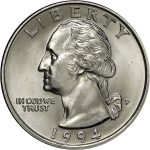 The president has signed the last numismatic-related bill this past week. On January 13, 2021, the president signed the Circulating Collectible Coin Redesign Act of 2020 (Public Law No. 116-330). It was the last possible day to sign the bill. If he did not sign it, the bill would be subjected to a pocket veto.
The president has signed the last numismatic-related bill this past week. On January 13, 2021, the president signed the Circulating Collectible Coin Redesign Act of 2020 (Public Law No. 116-330). It was the last possible day to sign the bill. If he did not sign it, the bill would be subjected to a pocket veto.
- H.R. 1923: Circulating Collectible Coin Redesign Act of 2020
Sponsor: Rep. Barbara Lee (D-CA)
LAST ACTION: Signed by the President and became Public Law No: 116-330. — Jan 13, 2021
The law will require the U.S. Mint to redesign the quarters’ reverse through 2030, starting in 2022.
Prominent American Women Quarters
For the quarters issued between 2022 and 2025, “The design on the reverse side of each quarter dollar issued under this subsection shall be emblematic of the accomplishments and contributions of one prominent woman of the United States.” The U.S. Mint will issue “up to” five quarters per year and confer with several groups to determine who receives the honor.
United States Semiquincentennial Coins
The United States will celebrate its seniquincentennial (250th Anniversary) on July 4, 2026. In celebration of the event, the law states that the U.S. Mint will issue the following coins:
- QUARTERS: 2026 quarters “with up to five different designs emblematic of the United States semiquincentennial.” One quarter must be design to be emblematic of the contribution of a woman or women.
- DOLLARS: orders the Mint to issue “$1 dollar coins with designs emblematic of the United States semiquincentennial.” These dollar coins will be issued in addition to the Native American and Innovation dollars.
Youth Sports Program
The law requires the U.S. Mint to celebrate youth sports with changes to the quarter and half-dollars to correspond to the Summer Olympic games of 2028 and the Winter games of 2030. This program will run from 2027 through 2030.
- QUARTERS: Up to five coins issued each year “shall be emblematic of one sport played by American youth.”
- HALF-DOLLARS: Up to five coins issued each year “emblematic of one Paralympic sport.”
- MEDALS: The law authorizes the U.S. Mint to create “medals with designs emblematic of the sport honored with the issuance of the coin.”
Medals for the 2028 Olympic Games in Los Angeles
The law authorizes the U.S. Mint “to design and manufacture medals for awarding at the 2028 Olympic Games in Los Angeles, California.” The law makes it the first time in the modern Olympics history that the U.S. Mint will create the games’ medals. Previously, the Olympic committees had a private vendor create the medals. According to the International Olympic Committee website, medals for the games played in the United States were created by the following:
| Year |
Games |
Location |
Minter of the Medals |
| 1904 |
Summer |
St. Louis |
Diege & Clust |
| 1932 |
Summer |
Los Angeles |
The Whitehead & Hoag Co. |
| 1932 |
Winter |
Lake Placid |
Robbins Company |
| 1960 |
Winter |
Squaw Valley |
Herff Jones |
| 1980 |
Winter |
Lake Placid |
Medallic Art Co. |
| 1984 |
Summer |
Los Angeles |
Jostens, Inc |
| 1996 |
Summer |
Atlanta |
Reed and Barton |
| 2002 |
Winter |
Salt Lake City |
O.C. Tanner |
Silver Bullion Coins
The new law allows the U.S. Mint to continue to make the five-ounce silver bullion coins that correspond to each of the quarter and half-dollar programs. Interestingly, the silver hockey-puck-sized coins appear to be popular and will continue to be available to collectors and investors.
Also added to the law is the ability to strike factional silver bullion coins with the same designs. It is uncertain if a half-ounce or quarter-ounce silver coin will sell, but we will find out.
Obverse of the Coins
George Washington will continue to appear on the obverse but “be designed in a manner, such as with incused inscriptions, so as to distinguish it from the obverse design used during the previous quarters program.”
The bill includes similar language for the image of John F. Kennedy on the 2026 Semiquincentennial half-dollar.
And now the news…

January 8, 2021
Coin collecting is viewed by many enthusiasts to be a form of modern day treasure hunting, as shops in South Beloit and Beloit continue to do well as collectors come seeking rare finds, or simply to make an investment in precious metals.

→ Read more at
beloitdailynews.com

January 11, 2021
The world’s finest Brasher Doubloon, the most legendary U.S gold coin ever produced, is heading for auction at Heritage this month. The 18th century coin is described as “arguably the world’s most famous numismatic rarity”, and is one of only seven examples known to exist.

→ Read more at
news.justcollecting.com

January 13, 2021
Ongoing excavations at a rural spot near the village of Újlengyel in central Hungary recently struck gold, both figuratively and literally. Archaeologists armed with powerful metal detectors found a buried treasure of approximately seven thousand silver and four medieval gold coins in Hungary, hidden centuries ago by unknown individuals.

→ Read more at
ancient-origins.net

January 14, 2021
Egypt: Archaeologists find coins with Cleopatra’s face on Thousands of objects including ancient coins, pottery and sculpture thousands of years old have been secured, the Israel Antiquities Authority (IAA) has confirmed.

→ Read more at
express.co.uk
If you like what you read, share, and show your support 
Dec 23, 2020 | coins, commemorative, dollar, US Mint
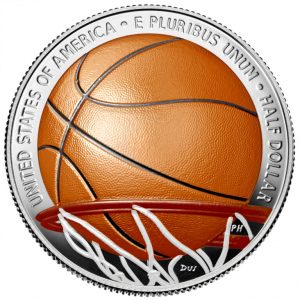
Colorized Basketball Hall of Fame Half Dollar Clad Coin (Image courtesy of the U.S. Mint)
Collectors of commemorative coins have until December 31 to purchase Women’s Suffrage Centennial Silver Dollars. They are available in proof and uncirculated finishes. Similarly, the Basketball Hall of Fame coins will also end next week. This program features a curved $5 gold coin, silver dollar, and clad half-dollar. It also means that the first colorized coins will also end.
Although I am not a collector of commemorative coins, I am a sports fan and enticed by the curved basketball coins. I ordered the Silver Dollar and the colorized clad half-dollar. I think the full-color half-dollar is better looking than just the colorized rim.
Following the 2018 American Innovation $1 Coin, the U.S. Mint began producing the coins as a reverse proof. The reverse proofs are enclosed in an individual folder with information about the coins and the innovation it honors. So that I can catch-up, I ordered the entire 2019 set. They have not released the South Carolina reverse proof coin honoring Septima Clark. When they do, I will order the complete 2020 set.
If you did not get what you wanted for the holidays or received gift cards, why not add something cool to your collection before the price doubles on the secondary market.
If you like what you read, share, and show your support 
Nov 29, 2020 | coins, dollar, news
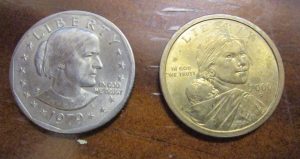 I forgot the comedian’s name who had about depicting the cost of things in old movies. He explained that in old western movies, a man would dismount from his horse, amble up to the bar for a drink and throw down a coin for the libation. It did not matter what the drink cost. The drinker paid one large silver coin with a loud ping.
I forgot the comedian’s name who had about depicting the cost of things in old movies. He explained that in old western movies, a man would dismount from his horse, amble up to the bar for a drink and throw down a coin for the libation. It did not matter what the drink cost. The drinker paid one large silver coin with a loud ping.
The silver dollar was the coin of the realm for the old west. It was hard money to go along with the hard times. Paper money had questionable value and could not be as trusted as a silver coin. Settling in the territories and building new lives on untamed land was risky and the feel of a metal coin was less risky than paper.
After the last Peace Dollar was struck in 1935, the U.S. Mint never minted another silver dollar for circulation again. The return of the large dollar coin came in 1971 with the copper-nickel Eisenhower Dollar. The coin was popular as a curiosity but waned until the bicentennial redesign. After the bicentennial, it seemed that the dollar coin had returned.
Then came the biggest failure of the modern coin era: Susan B. Anthony dollar.
Although the idea to honor suffragette Susan B. Anthony was sound, the rest of the coin’s design led to the long term rejection of dollar coins. The coin was smaller than the Eisenhower dollar but only slightly larger than a quarter. It was made using copper-nickel clad planchette and reeded edges that made it too similar to a quarter. Rather than being an 11- or 12-sided coin, it was round with a design that included a border to simulate the edges.
Many people tried to embrace the coin, but the confusion with the quarter was too costly. As college students, we abandoned the coin early. When the coin was spent as a quarter, we poor college students lost 75-cents per transaction or three cups of late-night coffee from the vending machine.
The introduction of the Sacagawea dollar in 1999 saw the basic planchet changed to fix all of the problems found in the Susie B. With the color change and the smooth edges, it was unlikely to be confused for another coin. Unfortunately, the Susie B. was such a failure that the coin has never gained traction in commerce.
The dollar coin programs of the 21st century have not been appreciated the way they should be. What better way to celebrate the republic’s longevity and the concept of the peaceful transfer of power than a celebration of the presidents? Since 2009, the coins celebrate the history of the Native American contributions with underappreciated designs.
Although some complain about a new series of coins, the American Innovation Dollar celebrates great inventions that have made life better. The coin is a better representation of the American spirit than a static design.
But there is no incentive to wean the country off of the paper dollar and embrace the coin. Even though Congress passed the laws to create these coins, they do not have the intestinal fortitude to eliminate the dollar note, as almost every first-world country has done. Instead, they pass laws creating coin series and wonder why they are not successful.
One of their alleged reason is that people do not want to change. But they are asking people who give specious reasons for resisting as “would you rather carry around 20 dollar coins or 20 $1 bills.” My response is, “neither. I would rather carry a $20 bill!”
It would be nice to join the civilized world and remove the $1 Federal Reserve Note from circulation. The coins have such exciting designs that they deserve circulation. Maybe someday the do-nothing Congress will figure it out–likely when its members’ average age dips below 60 years old!
And now the news…

November 22, 2020
Time to stop worrying about Covid, the election, rising sea level, murder hornets, the end of the world, etc. etc. Time instead to focus on the immediate problem, i.e. why we’re not using dollar coins?

→ Read more at
lostcoastoutpost.com

November 24, 2020
We used to carry and trade bits of metal everywhere, but a pandemic shortage and the rise of digital money are making jingly pockets a distant memory for many.

→ Read more at
nytimes.com

November 24, 2020
Ron Kerridge They will be offered by international coins, medals, banknotes and jewellery specialists Dix Noonan Webb via their website www.dnw.co.uk.

→ Read more at
worthingherald.co.uk

November 24, 2020
IRMO, S.C. — An Irmo couple made a remarkable discovery after moving into their dream home. James Mumford and his wife Clarissa recently moved to Irmo and when settling in, found quite a collection in one of the built-in dressers.

→ Read more at
wltx.com

November 25, 2020
"Brother, can you spare a dime?" That question became famous in the Great Depression. In 2020, with the pandemic raging, the answer could be, "Maybe, but they're hard to find."

→ Read more at
newsweek.com
If you like what you read, share, and show your support 
Apr 19, 2020 | dollar, news
Glenna Goodacre, the designer of the Sacagawea Dollar and world-renown sculptor, died at her home in Santa Fe, New Mexico of natural causes. She was 80 years old.
Amongst her better-known works include the Vietnam Women’s Memorial on the National Mall in Washington, DC. Goodacre also created the 8-foot standing portrait of President Ronald W. Reagan at the Reagan Library in Simi Valley, California.

The unveiling of the Sacagawea Dollar design at the White House with (L-R) irst Lady Hillary Clinton, Sacagawea Model Randy’L He-dow Teton, and Designer Glenna Goodacre.
Numismatists know Goodacre for the design of the Sacagawea Dollar. Since there are no images of Sacagawea, the Shoshone guide of the Lewis and Clark expedition, Goodacre found Randy’L He-Dow Teton, a member of the Shoshone-Cree tribe, to be her model. The resulting profile of Sacagawea in three-quarter view and her infant son, Jean Baptiste Charbonneau, carried on her back has been produced for 20 years.
In 2018, Goodacre donated several plaster and bronze casts of the coin that was used to test the design and show the relief of the coin. There is also a plaster cast with an alternate version without her baby on her back.
As Dennis Tucker wrote in her memory, “The numismatic community joins Glenna Goodacre’s family, friends, and many fans in mourning her loss and celebrating her art.”
And now the news…

April 14, 2020
SANTA FE, N.M. (AP) — Renowned sculptor and painter Glenna Goodacre, who created the Vietnam Women’s Memorial on the National Mall in Washington, D.C, has died. She was 80.

→ Read more at
huffpost.com

April 14, 2020
She discovered the rare 22-carat, 16th century Henry VII Fine Gold Angel coin A single mum struck gold when she unearthed a 500-year-old coin worth £2,500 in her back garden. Amanda Johnston, 48, was bored at home in the appropriately named Portsmouth suburb of Moneyfields when she grabbed her son George's metal detector and set to work looking for treasure.

→ Read more at
dailymail.co.uk

April 15, 2020
(Bloomberg) — The clamor for retail investors to get hold of precious-metals coins is about to get more urgent.

→ Read more at
finance.yahoo.com

April 16, 2020
(Kitco News) – Bullion investors shouldn’t expect to see a drop in premiums anytime soon as the supply crunch for gold and silver coins continues to grow, according to Peter Hug, global trading director for Kitco Metals.

→ Read more at
kitco.com

April 16, 2020
Gold saw its price soar over 1.5% notching its highest increase in more than seven years earlier this week, as investors moved towards the precious metal’s traditional safe-haven focus on fears of an extended recession and gloomy corporate earnings.

→ Read more at
irishexaminer.com

April 18, 2020
Jeb Robinson is on the hunt for the SS Benmacdhui A diver aged 84 and his old team – the youngest in his 70s – are kitting up to find treasure on the bed of the North Sea. Jeb Robinson will show there’s life in the old seadog yet as he searches the SS Benmacdhui.

→ Read more at
mirror.co.uk
Apr 8, 2020 | coins, dollar, exonumia
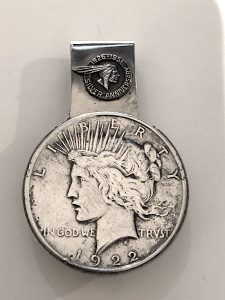 Now that some of us have a little time on our hands, why not think about how you can have fun with your collection. After all, there is more to collecting coins by types or date sets. Sometimes you need to think outside the folder and album and find something different.
Now that some of us have a little time on our hands, why not think about how you can have fun with your collection. After all, there is more to collecting coins by types or date sets. Sometimes you need to think outside the folder and album and find something different.
Take, for example, the money clip pictured here. Embedded in the money clip is a version of my favorite coin, a Peace Dollar. Although the 1922 Peace Dollar may be the most accessible of the series, its presence in this money clip adds to the allure.
But wait, there’s more!
If you look above the Peace Dollar is the Indian Chief emblem of Pontiac, the former automobile division of General Motors. The emblem celebrates the silver anniversary, 25 years, of the Pontiac Motor Division.
 GM introduced Pontiac as a companion marque nameplate to the Oakland Motor Division in 1926. Oakland managed Pontiac to sell cars at a lower price point than other Oakland manufactured vehicles. By 1929, Pontiac became more popular than Oakland, which led to Oakland’s closure in 1931 during the Great Depression.
GM introduced Pontiac as a companion marque nameplate to the Oakland Motor Division in 1926. Oakland managed Pontiac to sell cars at a lower price point than other Oakland manufactured vehicles. By 1929, Pontiac became more popular than Oakland, which led to Oakland’s closure in 1931 during the Great Depression.
Ironically, Pontiac would meet the same fate during the Great Recession. To meet the demands of regulators for accepting a $25 billion federal government loan, GM agreed to close Pontiac and Saturn, sell Saab, and close or sell Hummer as part of the restructuring. Like Oakland, Pontiac is now part of automaking lore.
The 1951 Pontiac Chieftain was a popular car. The Chieftain was available as a sedan, sedan coupe, business coupe, and deluxe convertible coupe. In 1950, Pontiac introduced the Catalina coupe that became a popular option that, in 1959, the Catalina succeeded the Chieftain as a model. The cars sold at the right price point for the burgeoning middle class of the post-war United States.
I drove a 1970 Pontiac Catalina 1977-78. It was big. It was green. It guzzled gas. We nicknamed it, “The Green Bomb.”
Turn over the money clip, and aside from seeing the reverse of the Peace Dollar, the clip is engraved, “Jack Blank Says Dollar for Dollar You can’t Beat a Pontiac.”
Jack Blank Pontiac was located at 1437 Irving Street, NW, in Washington DC. Jack Blank (1901-1980) founded Arcade Pontiac in 1937. In 1951, he renamed the dealership after buying out his partners. Blank retired as company president in 1969.
Blank was a prolific promotor. Aside from buying the rights to be the “Official Car Dealership of the Washington Redskins,” Blank created a lot of promotional items. Numismatically, collectors can find a 1964 encased cent with the dealership’s name and address. The money clip was a one-year promotion.
Blank died in 1980. The last records of the dealership were advertising in 1992 publications.
One collectible satisfies three interests. Numismatically, it is a Peace Dollar. I love the Peace Dollar. Even though this dollar was polished and is glued into an enclosure, it is still a silver dollar.
It is an advertising piece for a vintage car. My two favorite car eras are the muscle cars of the mid-1960s to the early 1970s and the cars of the art deco era. The Chieftain would be redesigned in later years, but it retains the art deco look I like.
Finally, it is part of Washington, DC history that has nothing to do with the government.
It is your turn to go out and find something that will satisfy you numismatically and other interests!
Mar 3, 2020 | ANA, coins, commemorative, dollar, legislative, policy
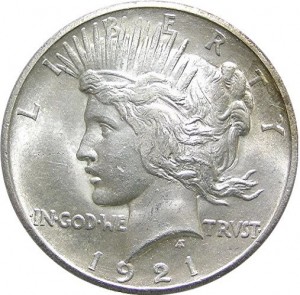 The 2021 commemorative coin calendar is full and it does not include a commemorative Morgan or Peace silver dollar.
The 2021 commemorative coin calendar is full and it does not include a commemorative Morgan or Peace silver dollar.
Last October, Congress passed the Christa McAuliffe Commemorative Coin Act of 2019 (Public Law No. 116-65) to be issued in 2021. In December, they passed the National Law Enforcement Museum Commemorative Coin Act (as part of Public Law No. 116-94). With two commemorative coin programs in 2021, there is no room for the 1921 Silver Dollar Commemorative Coin Act.
The odds of Congress creating a third commemorative program for 2021 is less than 1-percent.
When H.R. 3757 was introduced, the American Numismatic Association sent out a press release and asked the members to write their member of Congress. The numismatic press also carried that mantle at the beginning. Some suggested that a commemorative Morgan Dollar could be struck at the former mint in Carson City.
But that was in July, 2019, prior to the World’s Fair of Money.
During the World’s Fair of Money, a new Board of Governors was installed to allegedly lead the ANA. Since then, there has been little said by the ANA about H.R. 3757. This is the opposite of the response lead by Farran Zerbe.
Zerbe’s proposal for what became the Peace Dollar led to the appointment of a committee that lobbied Congress for the coin’s creation. It was not an easy road for the proposal, but Zerbe persisted, and a bill was passed.
Zerbe, who was ANA President from 1908 t0 1910, showed extraordinary leadership in getting this bill passed.
Many others have stepped up to represent the community with the support of the ANA and the hobby. Amongst the community’s achievements are the Bicentennial coins and the 50 State Quarters program.
Where is that support today?
Where has the ANA been since August 2019?
Like the 1921 Peace Dollar, a 2021 commemorative coin would not only highlight history but make sure the public knows about the ANA’s place in that history. It would introduce new collectors to one of the 20th century’s best designs and the ANA at the same time.
Aside from the public relations boost, 40-percent of the program’s surcharge would be paid to the ANA. With a mintage limit of 500,000 coins with a surcharge of $10 per coin, a potential $2 million could have been added to the ANA’s treasury.
A one-time payment of $2 million would provide a cushion of 35-percent, based on the ANA’s published 2019 budget. It would furnish a down payment on new education initiatives and outreach to promote the ANA’s growth.
The ANA has been business-as-usual with little said from the current Board.
It is difficult to understand why the ANA Board of Governors would let this opportunity pass. Is this a sign of leadership we are to expect during its two-year term?
Feb 17, 2020 | coins, dollar, US Mint
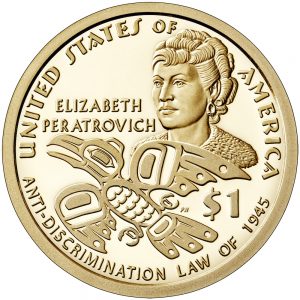 In our never-ending quest to convince more people to be interested in coin collecting, this week’s news provided us with another example of “if you do something that people like, they will be interested.”
In our never-ending quest to convince more people to be interested in coin collecting, this week’s news provided us with another example of “if you do something that people like, they will be interested.”
As the U.S. Mint released the Native American dollar coin with the image of Civil Rights leader Elizabeth Peratrovich, Alaskans are clamoring for a wider release of the coin. It is the first time since the early days of the small-dollar programs that there is a broad interest in $1 coins.
Elizabeth Peratrovich was an Alaskan native who was instrumental in having Alaska’s Anti-Discrimination Law passed by the territorial government. It was the first anti-discrimination law of any type passed in the United States.
Alaskans are asking that the Federal Reserve release 5 million coins into general circulation. The Seattle Branch of the San Francisco Federal Reserve Bank is responsible for banking in Alaska.
The Alaska State Legislature passed a resolution requesting the Federal Reserve make these coins available to Alaskans.
Although the Federal Reserve has not publically responded, they should be talking with the U.S. Mint to strike the 5 million coins necessary to send to Alaska. The coins may not circulate, but it is an excellent promotion for coin collecting.
Over the last few years, we have learned that interesting themes have sold well. Look at the interest in the American Somoa National Park fruit bat design. It is a well-executed design that is very interesting and has people looking for the coin in change. It will likely be in the one America the Beautiful Quarter in the most demand.
Other commemorative coins did very well when there was an exciting topic. With no offense to the American Legion, an outstanding organization, but what was the difference in the interest between their commemorative coin and the National Baseball Hall of Fame commemorative?
Remember the Girl Scouts’ commemorative coin fiasco?
You do not have to be a rocket scientist or a marketing guru to understand people will buy what they like. It is why the Royal Canadian Mint and the New Zealand Mint sign deals with entertainment companies to sell coins with movies, comics, and other images. These coins sell.
Unfortunately, we have a congress in the way that prevents the U.S. Mint from expanding its product line. Without being able to create collector coins for a new audience, we will continue to try to figure out ways to do the impossible: get more people interested in collecting coins.
And now the news…

January 23, 2020
Antiques Road Trip is back on our screens this February 2020, with more antiques experts ready to haggle and bag a bargain. Each series follows the same premise, as two experts head out across the country, scouring for the best finds they can then take to auction.

→ Read more at
realitytitbit.com

February 11, 2020
A collection of Celtic coins in a Jersey museum has received a Guinness World Record for the largest collection of Iron Age coins discovered in the United Kingdom or Ireland. The total number of coins found in the huge hoard was a staggering 69,347, overtaking the previous record of 54,951 coins held by a collection in Wiltshire.

→ Read more at
irishcentral.com

February 11, 2020
OTTAWA — Willie O'Ree's image is on a plaque in the Hockey Hall of Fame, a likeness of his trademark fedora sits atop an NHL award that bears his name, and two hockey rinks in the United States and Canada are named in his honor.

→ Read more at
nhl.com

February 13, 2020
The 2020 Native American $1 Coin depicts Alaska Native civil rights leader Elizabeth Peratrovich and a formline raven. (U.S. Mint)

→ Read more at
alaskapublic.org

February 13, 2020
Before the $20 bill is redesigned, Harriet Tubman could appear on a coin.

→ Read more at
auburnpub.com

February 14, 2020
Seven ancient coins were returned to the government of Cyprus Friday at a repatriation ceremony in Washington, D.C. (CBP Photo/Handout) BALTIMORE, MD — More than 10 years after federal agents in Baltimore discovered ancient coins in a search of cargo, they returned them to their rightful owner: the government of Cyprus.

→ Read more at
patch.com
Jul 23, 2019 | celebration, coins, commemorative, dollar, policy, US Mint

The dual-dated Bicentennial reverse designs are still very popular amontst collectors
The act forbade the striking of silver dollars for five years ending an experiment with the striking of Peace Dollars in 1964. There are rumors that at least one 1964-D Peace exists despite the U.S. Mint’s insistence that all of the coins were melted.
Finally, the act made all coins and currency produced in the United States and specific bank issues as legal tender, which reversed the demonetization of the Trade Dollar in 1867.
The Coinage Act of 1965 marks the dividing line between “classic” and “modern” coinage.
After fifty-four years of modern coinage, there continues to be collectors and dealers who turn up their noses at modern coins.
Although the stories behind many of the classic issues are interesting, modern coins provide a diversity that is meaningful and affordable for the average collector.
The first coin of the modern era that had a public impact was the dual-dated coins with the reverses honoring the nation’s bicentennial. The bicentennial was a two-year celebration preceded by three years of hype and prep. When the coins were released, many people searched their change, looking for the coins. It was the first time in many years that half-dollar and large dollar coins circulated in significant numbers since finding them in change was exciting.

The Susan B. Anthony dollar was less than successful because it was confused with a quarter
The most successful program of the modern era was the 50 State Quarters program. The program started strong with a lot of interest. Unfortunately, a downturn in the economy and the television hucksters overselling the potential value of the series turned away a lot of potential collectors.
As the success of the 50 State Quarters program grew, Congress passed laws to create several other circulating commemoratives. The programs include the Westward Journey Nickels, Abraham Lincon Bicentennial cents, and the Native American $1 coin program using the golden-colored planchets of the Sacagawea dollar.
The modern era saw the return of the commemorative coin programs. Some were very popular, like the 2001 American Buffalo Commemorative Coin and 2014 National Baseball Hall of Fame Commemorative Coin programs. There were less popular coins, but none had flopped as bad as the 2013 Girl Scouts of the USA Centennial Silver Dollar.
Unlike previous commemorative coin laws, modern laws help the U.S. Mint limit the time these coins can remain on sale. It also limits their production to one year.
Finally, the modern era has given us the bullion coin series. It started with the American Silver Eagle program that was created to provide a way for the United States government to sell off silver saved in the Defense National Stockpile. As a result, the U.S. Mint has used the program to experiment with different finishes, including burnished and reverse proof.
Congress passed the Gold Bullion Coin Act of 1985 a few months later after being lobbied by the gold mining interests. This law created the American Eagle Gold Bullion Program.
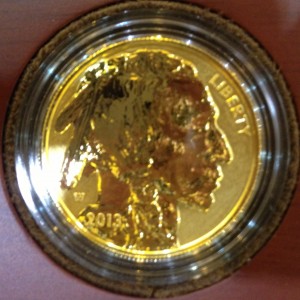
2013-W American Buffalo gold reverse proof obverse
After 54 years there are a lot of exciting choices for the modern collector. And this does not consider the collection of errors or varieties, like the three types of 1972 Eisenhower dollars or the wide versus narrow lettering on the reverse of the 1999 Lincoln cent.
It is past the time for the numismatic community to embrace the collection of modern coins more than it has. There may be few modern coins that are worth thousands of dollars, but they are available to capture the interest of potential collectors. After all, how many of us started collecting by searching pocket change.
Mar 16, 2019 | Britain, coins, dollar
It has been eight months since I opened my shop of treasures. While I have had fun most of the time one thing that has not happened is a good cash draw find. That is until recently.

1979-P Susan B Anthony Dollar and 2000-P Sacagawea Dollar found in the cash draw
I think the patron was surprised I took the coins without question. I threw the coins in the far left slot and counted out his change. With a quick tear of the receipt and a nod, I thanked the customer for his business and he left.
Later, I was telling someone about the transaction and was told the customer was testing me. Apparently, some people use dollar coins, half dollars and two dollars bills to test the store to see if the store knows enough to take the coins. I was told that the “pass rate” for this test is under 20-percent. I guess I passed!
Earlier today, I passed one of the Sacagawea dollars out for change.

2013 British 10p coin. It looks better in hand!
It’s a cool find and worth 13-cents, but what is it doing in my cash drawer?
I cannot blame anyone because my assistant was not in and I was the only one operating the cash register. I didn’t open a roll taking the blame off the bank. No, this is my fault and I lost 12-cents on the transaction!
I thought I would find a loose Canadian cent or a Jamaican penny mixed in with the copper. Nope! Apparently, I didn’t pay enough attention and was handed 10 pence.
After counting the coins, I replaced the British coin with a U.S. quarter that was in my pocket. My drawer balances but now I have my own lesson to pay attention!
 Starting today, April 18, 2021, through April 24, National Coin Week celebrates “Money, Big and Bold,” the history of the large dollar coin. The influence for this year’s NCW theme is the 100th anniversary of the revival of the Morgan Dollar and the first issue of the Peace Dollar. It is also the 50th anniversary of the first Eisenhower Dollar, the last of the large dollar coins.
Starting today, April 18, 2021, through April 24, National Coin Week celebrates “Money, Big and Bold,” the history of the large dollar coin. The influence for this year’s NCW theme is the 100th anniversary of the revival of the Morgan Dollar and the first issue of the Peace Dollar. It is also the 50th anniversary of the first Eisenhower Dollar, the last of the large dollar coins. → Read more at pennlive.com
→ Read more at pennlive.com
 → Read more at jacksonvilleprogress.com
→ Read more at jacksonvilleprogress.com
 → Read more at phys.org
→ Read more at phys.org
 → Read more at kitco.com
→ Read more at kitco.com
 → Read more at star-telegram.com
→ Read more at star-telegram.com
 → Read more at theguardian.com
→ Read more at theguardian.com


